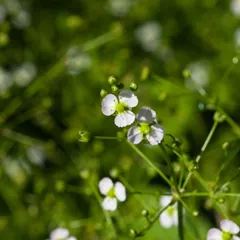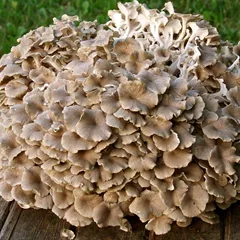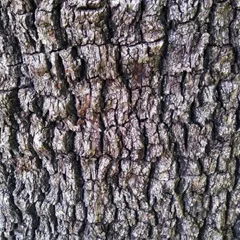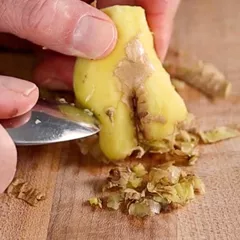Yin Excess
The information provided here is not a replacement for a doctor. You shouldn't use it for the purpose of self-diagnosing or self-medicating but rather so you can have a more informed discussion with a professional TCM practitioner.
At a glance
Preliminary reading: What is a pattern? The concept of Yin The concept of Excess
Key attributes
Chinese name: 阴盛 Pinyin name: Yīn Shèng
Pattern nature: Full
Pattern hierarchy: General pattern
Causes
Common causes: 1. External Wind-Cold or Damp-Cold, 2. Diet
Diagnosis
Common symptoms: Nausea No thirst Cold limbs Pale urine Poor appetite and seven other symptoms
Pulse type(s): Slippery (Hua), Tight (Jin), Wiry (Xian), Full (Shi)
Tongue description: Pale with white wet and/or creamy think coating
Treatment
Treatment principle: Warm the internal Organs, expel internal Wind-Cold or Damp-Cold, expel Dampness or Phlegm
Common formulas: Wu Ling San Wu Pi Yin
Pathology
Excess Yin is a Full Yin state pattern. It creates Cold symptoms which are similar to these of Yang Deficiency, such as feeling of cold, cold limbs, profuse but clear urination, pain that gets worse by pressure but relieved by warmth. It is because Yin is cooling in nature and the excessive occurrence of Yin extinguish the Yang fires.
The Cold here mainly refers to Wind-Cold and Damp-Cold. They can invade the Interior Organs directly such as the Stomach, Large and Small Intestines and Uterus. They can also invade the Exterior and cause painful obstruction syndrome like Wind, Cold or Dampness invading the Channels, joints and muscles.
When Yin becomes in Excess, this can lead to Body Fluids accumulating in the body and form Dampness or Phlegm. They may built up throughout the body, giving a general appearance of swelling and heaviness, or they may collect in a particular area of the body. For example, if they are in the abdomen, nausea and vomiting appears. If in the Lungs, cough with copious clear mucus occurs.
Then stagnated Dampness may also turn to Heat, and a general hypoactivity of Organ functions appears.
Causes
External Wind-Cold or Damp-Cold: Yin Excess is caused by over-exposure to cold, windy or damp environments and climates. The Pathogenic Evils stagnate and obstructs inside body, so that Yang is unable to balance Yin. The stagnated Dampness can also turn to Heat.
Diet: It especially occurs with over consumption of cold or damp foods, such as salads, fruits, juices, raw foods, iced drinks and frozen items such as ice cream and frozen yogurt. Refined foods, flour products, and hot greasy foods such as fried red meats can also be the causes.
Diagnosing Yin Excess
Diagnosing a pattern in Chinese Medicine is no easy feat and should be left to professional practitioners. In particular one has to know how to differentiate between different types of pulses and tongue coatings, shapes and colors as well as learn to read from a long list of seemingly unrelated symptoms.
Pulse type(s): Slippery (Hua), tight (Jin), wiry (Xian) or full (Shi)
Tongue description: Pale with white wet and/or creamy think coating
Main symptoms: Nausea No thirst Cold limbs Pale urine Poor appetite Feeling of cold Profuse urination Feeling of oppression Heavy vaginal discharge Pain relieved with heat Forceful but slow movement Epigastric pain worsen by pressure
Diagnosis commentary: Key characteristic symptoms of this pattern are the feeling of cold, no thirst, and pain that can be relieved by applying warmth.
Treating Yin Excess
Treatment principle
Warm the internal Organs, expel internal Wind-Cold or Damp-Cold, expel Dampness or Phlegm
Herbal formulas used to treat Yin Excess



The top herbs in Wu Ling San are Water Plantain (Ze Xie), Poria-Cocos Mushrooms (Fu Ling) and Polyporus (Zhu Ling)
Wu Ling San
Source date: 220 AD
Number of ingredients: 5 herbs
Key actions: Promotes urination,. Warms the Yang. Strengthens the Spleen. Promotes Qi transformation function. Drains Dampness. Clears edema.
Formula summary
Wu Ling San is a 5-ingredient Chinese Medicine formula. Invented in 220 AD, it belongs to the category of formulas that promote urination and leach out Dampness.
Besides Yin Excess, Wu Ling San is also used to treat Kidney Yang Deficiency with Water overflowing or Greater Yang Accumulation of Water.



The top herbs in Wu Pi Yin are Poria-Cocos Mushrooms (Fu Ling), Mulberry Bark (Sang Bai Pi) and Ginger Peel (Sheng Jiang Pi)
Wu Pi Yin
Source date: 1107 AD
Number of ingredients: 5 herbs
Key actions: Reduces edema, diuretic. Regulates and strengthens Spleen Qi.
Formula summary
Wu Pi Yin is a 5-ingredient Chinese Medicine formula. Invented in 1107 AD, it belongs to the category of formulas that promote urination and leach out Dampness.
Besides Yin Excess, Wu Pi Yin is also used to treat Oedema.
